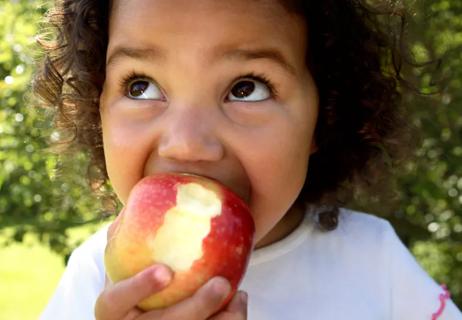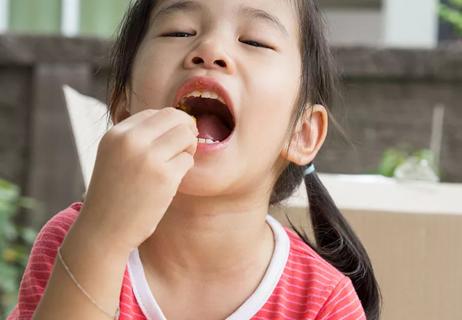Eating wisely at lunch can result in a better practice after school

Lunch is a vital meal if your children are active in sports because it’s often the last meal they have before an after-school practice and will affect their energy and performance.
Advertisement
Cleveland Clinic is a non-profit academic medical center. Advertising on our site helps support our mission. We do not endorse non-Cleveland Clinic products or services. Policy
If they eat too little, they will be tired and sluggish. If they eat too much of the wrong foods, they could have an energy spike followed by a crash – or have an upset stomach from too much fat or fiber.
Before you start planning what your child should eat for lunch, dietitian Kate Patton, MEd, RD, CSSD, LD, says to consider these factors:
Whether your child brings a packed lunch or buys a mid-day meal, it should reflect the MyPlate guidelines (there’s even an app you can download.) The goal is to improve people’s health by helping them make better food choices.
The MyPlate guidelines say your child’s lunch should include grains, a fruit, vegetables, dairy and protein. This will ensure they are getting an adequate amount of carbohydrates, protein, fat, vitamins and minerals to fuel them for afternoon activities.
Let’s look more closely at these food groups:
Grains — Choose whole grains most often. Switch up the traditional sandwich by choosing a bagel, wrap, tortilla or pita instead. Try a variety of pasta shapes and types, such as ravioli, tortellini and gnocchi.
Advertisement
Fruit — Choose whole fruit first, 100% fruit juice second. Fruit comes in so many forms today, so pack what your child likes — fresh, frozen, dried, cups, pouches, slices or kebobs. Sneak fruit into other places, like bananas on a peanut butter sandwich or fresh fruit on plain yogurt.
Vegetables — There is no question getting your kids to eat their veggies can be the toughest, so try to get creative. Pair raw veggies with a dip such as hummus, natural peanut butter, homemade Greek yogurt or ranch dressing. Mix veggies in pasta or pasta sauce, mix them in smoothies or slice them thin, spritz them with olive oil and roast them to make snacks like kale chips.
Dairy — Milk and yogurt are two of the most nutrient-dense foods kids can eat. They provide carbohydrates, protein, fat, calcium, vitamin D, plus many other minerals. So pack a thermos of milk, go for shelf-stable milk cartons, or have your child buy milk at school. Yogurt comes in many forms that can be attractive to kids — have them try regular or Greek in tubs or tubes.
Protein — Think outside the box when it comes to protein. Deli meats are a quick and easy go-to, but choose nitrate-free versions. Also consider leftover dinner meats, hardboiled eggs, cheese sticks, slices or wedges, hummus, nut butters or nuts.
Want to include a sweet or salty treat? Choose wisely and keep portions in check. Try air-popped or pre-popped plain popcorn, whole-wheat pretzels or crackers, all-natural corn tortilla chips, whole-grain chocolate chip granola bar (with at least 3 g fiber and less than 8 g sugar), graham crackers, trail mix, chocolate rice cakes or pudding.
Are you and your child tired of packed lunches? Buying the designated school lunch is the perfect alternative.
School lunches typically meet the needs of the school athlete and the National School Lunch Program mandates that meals include the proper portions, based on age, of fruit, vegetables, grain, meat and milk, while also limiting saturated fat and sodium. The meals include a variety of colorful vegetables and fruit. Half of the grains served throughout the week are whole grains, and the milk served is either skim or 1%.
Finally, be sure to involve your children in the planning and preparation of their lunch so they understand the importance of a balanced lunch and how food equals fuel for their athletic endeavors.
Advertisement
Learn more about our editorial process.
Advertisement

Look for snacks that are low in sugar and high in fiber, protein and healthy fats

Be a good role model, set family meal times and involve your kids in meal planning

Fiber can lower blood pressure and promote healthy bowel function

Insights and healthy tips for parents to help your child achieve their recommended weight

Make lunch fun, creative and colorful

No amount of caffeine is safe for kids under 12, and kids 12 to 17 should be cautious about how much they consume

They aren’t unhealthy, but they’re probably a waste of money

When and how to introduce solid foods into your baby's diet

Type 2 diabetes isn’t inevitable with these dietary changes

Applying a hot or cold compress can help with pain